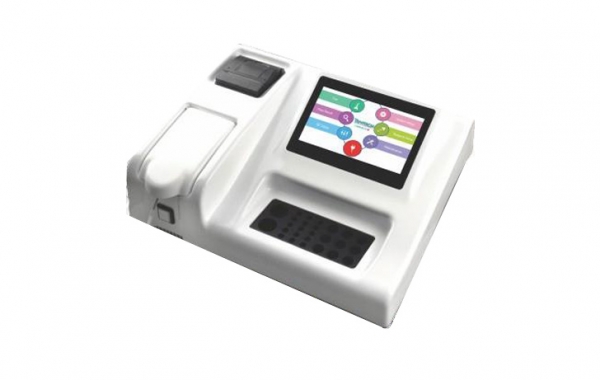The healthcare industry is witnessing rapid advancements in technology, and diagnostic tools are at the forefront of this transformation. One such essential device that has revolutionized laboratory operations is the semi auto analyser. It has become a cornerstone in diagnostic laboratories, enabling precise, reliable, and cost-effective testing. This article delves deep into the significance, working principles, applications, and benefits of the semi auto analyser, highlighting why it is a preferred choice in medical diagnostics.
What is a Semi Auto Analyser?
A semi auto analyser is a diagnostic instrument used in clinical laboratories to perform various biochemical, immunological, and hematological tests. Unlike fully automated analysers, semi auto analysers require manual intervention for certain steps, such as sample loading and reagent addition. However, the analysis and data processing are automated, ensuring high accuracy and efficiency in test results.
The device is designed to perform a wide range of tests, including liver function tests (LFTs), kidney function tests (KFTs), lipid profiles, glucose levels, and enzyme assays. Its versatility and user-friendly interface make it an indispensable tool in both small-scale and large-scale diagnostic laboratories.
Working Principles of Semi Auto Analysers
The semi auto analyser operates on principles of photometry, turbidimetry, and nephelometry, depending on the type of test being performed. Here is a brief overview of its working mechanism:
- Sample and Reagent Preparation: The operator manually prepares the patient sample and mixes it with specific reagents. This step is crucial to ensure accurate reactions.
- Reaction Chamber: The prepared sample is placed in the reaction chamber, where it reacts with the reagents. The reaction produces measurable changes, such as color change or turbidity.
- Detection and Analysis: The analyser uses optical sensors to detect these changes. For instance, in photometry, the intensity of light passing through the sample is measured to determine the concentration of the analyte.
- Result Generation: The device processes the data using pre-programmed algorithms and generates accurate test results, which can be displayed on the screen or printed for record-keeping.
Key Features of Semi Auto Analysers
- Accuracy and Precision: Semi auto analysers deliver highly reliable results, minimizing human errors during the analytical process.
- User-Friendly Interface: These devices are equipped with intuitive software, making them easy to operate even for less experienced technicians.
- Versatility: Semi auto analysers support a broad range of tests, making them suitable for multiple diagnostic applications.
- Compact Design: Their compact size makes them ideal for laboratories with limited space.
- Cost-Effective: Compared to fully automated analysers, semi auto analysers are more affordable, making them accessible for small and medium-sized diagnostic centers.
Applications of Semi Auto Analysers
The semi auto analyser finds applications in various fields of medical diagnostics, including:
- Biochemistry Testing: Used extensively for biochemical assays such as glucose, cholesterol, triglycerides, and protein levels.
- Immunological Assays: Facilitates testing for specific antibodies and antigens, aiding in the diagnosis of infections and immune disorders.
- Hematology Testing: Supports basic hematological analyses, including hemoglobin levels and erythrocyte sedimentation rate (ESR).
- Research Laboratories: Ideal for research purposes where precision is required, and cost constraints are a consideration.
- Veterinary Diagnostics: Widely used in veterinary labs for diagnosing animal diseases and monitoring health parameters.
Advantages of Semi Auto Analysers
- Enhanced Efficiency: By automating critical parts of the analytical process, these devices save time and increase productivity.
- Reduced Errors: Automation in data processing eliminates manual calculation errors, ensuring accurate results.
- Flexibility: Operators have control over specific steps, allowing customization of tests based on individual requirements.
- Affordable Maintenance: Semi auto analysers are simpler to maintain compared to fully automated systems, reducing operational costs.
- Adaptability: These analysers can be used in diverse settings, from small clinics to large hospitals and research facilities.
Factors to Consider When Choosing a Semi Auto Analyser
When selecting a semi auto analyser for your laboratory, it is essential to consider the following factors:
- Test Menu: Ensure the analyser supports a wide range of tests relevant to your laboratory’s requirements.
- Throughput: Depending on the workload, choose a device with an appropriate sample processing capacity.
- Ease of Use: A user-friendly interface with clear instructions is crucial for seamless operation.
- Maintenance and Support: Opt for brands that offer reliable after-sales service and technical support.
- Budget: Balance cost with features to ensure value for money without compromising on quality.
Future Prospects of Semi Auto Analysers
The demand for semi auto analysers is expected to grow in the coming years, driven by the increasing prevalence of chronic diseases and the need for accurate diagnostic tools. Technological advancements are likely to enhance the capabilities of these devices, integrating features such as remote monitoring, wireless connectivity, and advanced data analytics.
Moreover, with the rising focus on healthcare in rural and underserved areas, semi auto analysers are poised to play a critical role in bridging the gap by providing affordable and reliable diagnostic solutions.
Conclusion
The semi auto analyser stands as a testament to the advancements in diagnostic technology, offering a perfect blend of automation and manual control. Its ability to deliver accurate results, coupled with cost-effectiveness and versatility, makes it an invaluable asset in modern laboratories. Whether for small clinics or large diagnostic centers, investing in a semi auto analyser is a step towards enhancing diagnostic capabilities and improving patient care.
As the healthcare industry continues to evolve, the role of semi auto analysers will only grow, cementing their importance in shaping the future of medical diagnostics.



